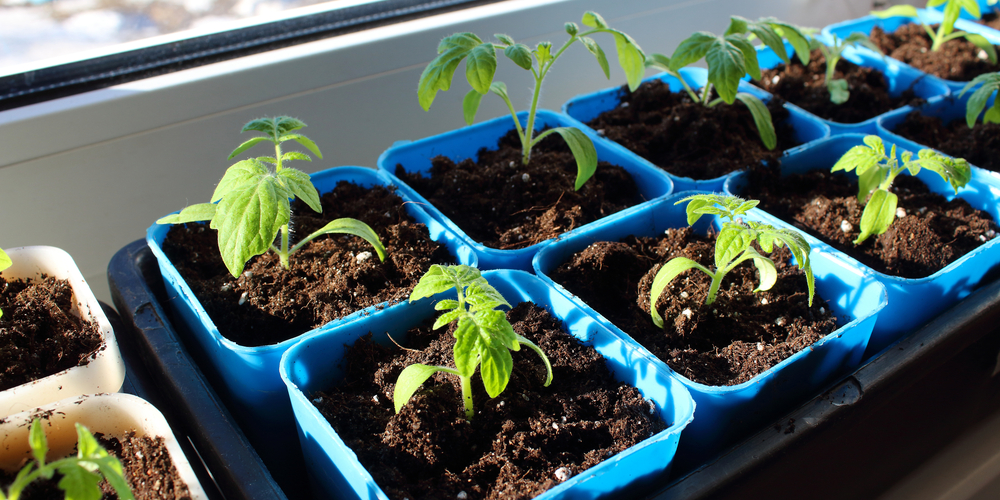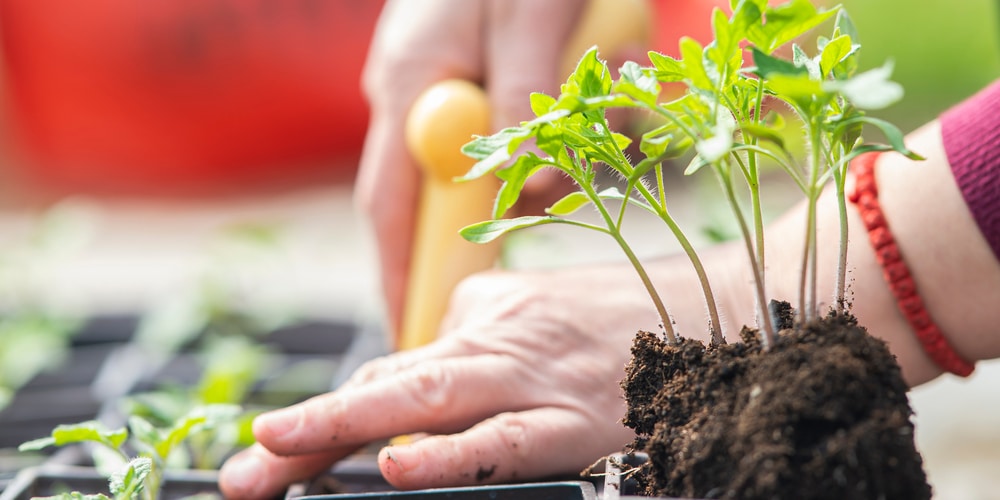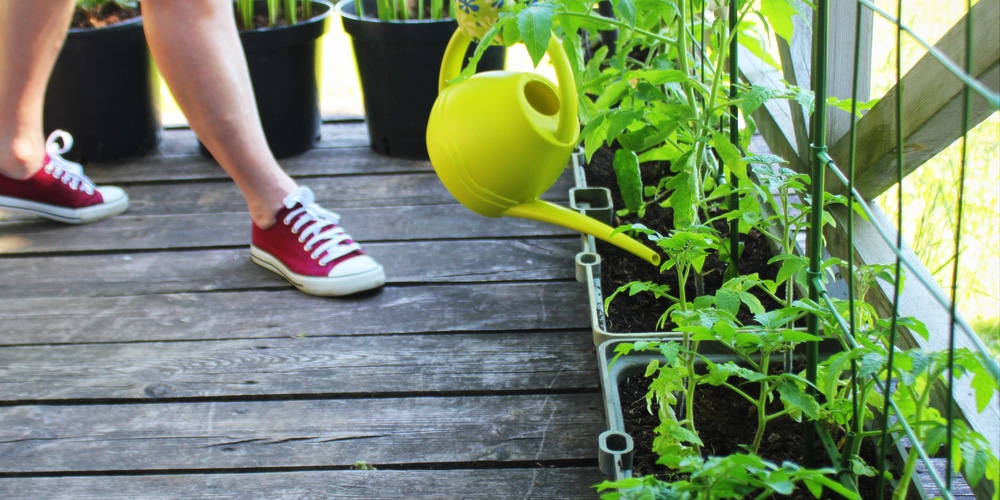Growing your own tomato plants is a great way to save money and be sure of getting healthy, tasty, and fresh tomatoes. You can even save more if you start your tomato seed indoors rather than buying from nurseries.
If you want to try your hands at growing tomatoes, it is extremely important to know when to transplant the seedlings and how to do it properly. After all, proper timing and transplanting your tomato seedlings correctly is the key to growing healthy tomatoes and getting a great harvest.
Generally, transplanting tender seedlings can be challenging, which is especially true when it comes to transplanting tomato seedlings. This post will cover more on transplanting tomato seedlings, emphasizing when and how to do it properly.
When is the best time to transplant tomato seedlings from a seed tray?
Growing tomatoes from seed starts out the same way, but transplanting at the right time makes all the difference.
That’s why you always want to do proper timing when taking your seedlings from the seed tray. Thankfully, deciding when to transplant or repot tomato seedlings is not hard.
Transplanting tomato seedlings is somewhat regionally specific. Even so, there are factors that help tell that it is the right time to transplant.
Generally, tomato seedlings should be transplanted when the nighttime temperature is consistently above 50 degrees Fahrenheit, especially if you are transplanting outside.
Whether you are repotting or planting in your garden, tomato seedlings are usually ready for transplanting from seed starting trays when they are 3-4 inches tall and have developed their second set of true leaves.
During this time, it is likely that the seedlings have a sufficient root system. You don’t want to transplant seedlings that have not developed substantial roots as the root ball can fall apart, causing the fragile new roots to break, which can result in stunt growth.
If your tomato seedlings have reached 4 inches tall and you’re unsure whether they have developed a strong root system, you can gently pull one of the seedlings from the tray and check if they have proper roots.
How to transplant tomato seedlings properly
Tomato seedlings are ready for transplanting from the starting trays when they have developed the second pair of true leaves and have a strong root system.
However, this doesn’t mean you should just transplant them immediately they meet minimum transplanting requirements. For the best results, you want to transplant them when the weather and soil conditions are optimal, typically after the dangers of frost.
When it comes to transplanting tomato seedlings, a general rule of thumb is to wait until nighttime temperatures are constantly above 50°F. Tomato seedlings are sensitive to cold, and cold snaps and consistently low temperatures can damage or destroy them.
To help you transplant your tomato seedlings properly, here are the steps that you need to follow:
1. Hardening off
Some gardeners opt to repot their tomato seedlings before planting them in their final location. That said, whether you repot or transplant your seedlings directly to your garden, the first thing to do before transplanting is hardening them off.
Essentially hardening off seedlings means slowly and gradually getting them used to outdoor conditions. Typically, acclimating your tomato seedlings to the outdoors takes 10 days to 2 weeks.
2. Soil preparation
Tomatoes grow best and produce well when planted in an area that receives at least 6 to 8 hours of full sun.
For the best results, find a spot in your garden that receives full sun and has rich, well-drained soil with a slightly acidic pH. Tomato plants prefer soil pH between 6.0 and 6.8.
Regardless of what kind of soil you have, it is imperative to amend it with a lot of organic material to improve drainage, open up the soil for air to penetrate, and add essential nutrients to the soil.
While mixing the organic material into the soil, work on the soil to make it loose to a depth of at least 8 inches. Tomatoes have adventitious roots, so they should be planted deeper.
3. Transplant
After you have prepared your garden, it is time to transplant your tomato seedlings. During planting, it is advisable that you add a handful of organic tomato fertilizer to the planting holes.
Tomato seedlings should be planted such that two-thirds of the seedlings are under the soil surface. When transplanting, pinch off the lower leaves, then place the seedling such that the top leaves are just above the soil surface. For leggy seedlings, you will want to plant them in trenches side by side.
4. Watering
After a transplant, your tomato plants need to be watered consistently to establish themselves. Water generously in the morning so the plants can have enough moisture to keep them throughout the day.
After the first two weeks, change the watering routine and water every two days. A layer of mulch can help improve moisture-retaining and reduce evaporation, especially in the afternoon sun.


